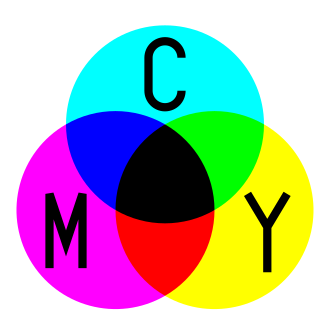Shades of magenta
Shades of Magenta
Magenta is a color that is often described as a purplish-red or reddish-purple. It is a color that is located between red and blue on the color wheel and is complementary to green. Magenta is a secondary color in the RGB color model, created by combining equal parts of red and blue light. In the CMYK color model, used in color printing, magenta is one of the primary colors, along with cyan and yellow.
- Definition and Characteristics
Magenta is not a spectral color, meaning it does not correspond to a single wavelength of light. Instead, it is perceived by the human eye when red and blue light are combined in equal intensity. This makes magenta a non-spectral color, similar to pink, brown, and other colors that do not appear in the visible spectrum.
The color magenta can vary in hue, saturation, and brightness, leading to a wide range of shades. These shades can be used in various applications, from art and design to fashion and branding.
- Shades of Magenta
- 1. Fuchsia
Fuchsia is a bright, vivid shade of magenta that is named after the fuchsia flower. It is often used in fashion and design for its eye-catching and vibrant appearance. Fuchsia is typically more saturated and slightly more towards the red end of the magenta spectrum.
- 2. Hot Pink
Hot pink is a shade of magenta that is lighter and more vibrant. It is often associated with youthfulness and energy. Hot pink is frequently used in fashion, cosmetics, and pop culture.
- 3. Rose
Rose is a softer, more muted shade of magenta. It is often used in contexts where a more subtle and elegant appearance is desired. Rose can be seen in floral arrangements, interior design, and romantic themes.
- 4. Cerise
Cerise is a deep, rich shade of magenta with a slightly darker tone. It is named after the French word for cherry, reflecting its deep red-pink hue. Cerise is often used in fashion and design for a sophisticated and bold look.
- 5. Orchid
Orchid is a pale, soft shade of magenta with a hint of purple. It is named after the orchid flower and is often used in design for its delicate and calming appearance.
- Applications of Magenta
Magenta is widely used in various fields due to its vibrant and striking appearance. In printing, magenta is one of the primary colors in the CMYK color model, essential for producing a wide range of colors. In digital media, magenta is used in the RGB color model to create vivid and dynamic visuals.
In fashion, magenta is a popular choice for clothing and accessories, offering a bold and modern look. In interior design, magenta can be used to create focal points and add a touch of vibrancy to a space.
- Cultural Significance
Magenta has various cultural associations and meanings. It is often associated with creativity, innovation, and individuality. In some cultures, magenta is seen as a color of transformation and change, symbolizing new beginnings and growth.
- Also see
Transform your life with W8MD's budget GLP-1 injections from $125.
W8MD offers a medical weight loss program to lose weight in Philadelphia. Our physician-supervised medical weight loss provides:
- Most insurances accepted or discounted self-pay rates. We will obtain insurance prior authorizations if needed.
- Generic GLP1 weight loss injections from $125 for the starting dose.
- Also offer prescription weight loss medications including Phentermine, Qsymia, Diethylpropion, Contrave etc.
NYC weight loss doctor appointments
Start your NYC weight loss journey today at our NYC medical weight loss and Philadelphia medical weight loss clinics.
- Call 718-946-5500 to lose weight in NYC or for medical weight loss in Philadelphia 215-676-2334.
- Tags:NYC medical weight loss, Philadelphia lose weight Zepbound NYC, Budget GLP1 weight loss injections, Wegovy Philadelphia, Wegovy NYC, Philadelphia medical weight loss, Brookly weight loss and Wegovy NYC
|
WikiMD's Wellness Encyclopedia |
| Let Food Be Thy Medicine Medicine Thy Food - Hippocrates |
Medical Disclaimer: WikiMD is not a substitute for professional medical advice. The information on WikiMD is provided as an information resource only, may be incorrect, outdated or misleading, and is not to be used or relied on for any diagnostic or treatment purposes. Please consult your health care provider before making any healthcare decisions or for guidance about a specific medical condition. WikiMD expressly disclaims responsibility, and shall have no liability, for any damages, loss, injury, or liability whatsoever suffered as a result of your reliance on the information contained in this site. By visiting this site you agree to the foregoing terms and conditions, which may from time to time be changed or supplemented by WikiMD. If you do not agree to the foregoing terms and conditions, you should not enter or use this site. See full disclaimer.
Credits:Most images are courtesy of Wikimedia commons, and templates, categories Wikipedia, licensed under CC BY SA or similar.
Contributors: Prab R. Tumpati, MD




